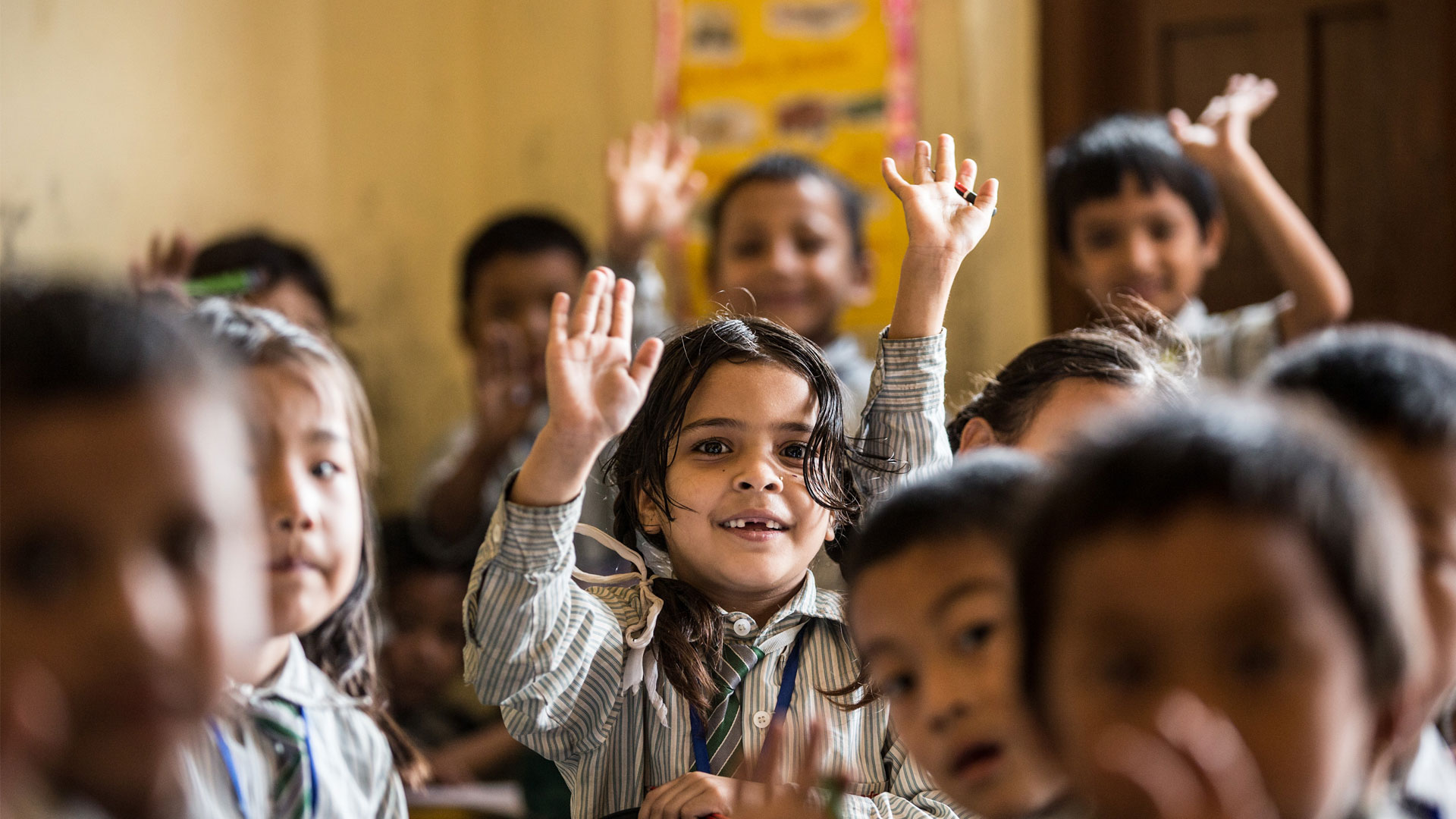Strong Secondary School Systems for Sustainable Growth
In this past decade, Nepal has shown consistent economic growth at an average of 4% annually. It also slashed the percentage of its population living below the poverty line from 31% to 18%.
In primary education, Nepal has been making steady progress toward increasing access and equity. As a result, the number of girls enrolling in primary grades has been growing, and those repeating classes, declining.
Secondary education—grades 9 to 12—paints a different picture. Despite good progress in basic education, few students progress to secondary education, particularly girls from the poorest and disadvantaged backgrounds.
There is also much to be done in the quality of student learning. Nepal’s latest National Assessment of Student Achievement reveals that in 2017, the average performance scale for grade eight students in Math and Science was 493.4 and 498.8, respectively. There is a lack of subject teachers, particularly for English, Math, and Science. Furthermore, inadequate professional development of teachers plus weak school leadership and management hinder teaching and learning.
Human capital development emerges as a critical area in Nepal’s sustainable development. Investment in education, particularly in secondary education, will help Nepal stay on track in developing economically and achieving the country’s Sustainable Development Goals.
ADB and financing partners lend a hand
Building on its extensive experience in education, ADB is helping Nepal implement the Supporting School Sector Development Program (SSDP). The SSDP is an initiative to improve access, equity, and the quality of school education.
ADB is working with cofinanciers and other development agencies, including the European Union, Global Partnership for Education Fund, governments of Finland and Norway, Japan International Cooperation Agency, UNICEF, USAID, and the World Bank.
Quality, access, and good governance are key
In setting up the secondary education system to help achieve equitable socioeconomic development, the project‘s targets are broken down into four outputs: improving access to basic and secondary schools, improving the quality of school education, pilot-testing a model school program, and improving the school system governance.
Improving access
This focuses on implementing a revised pro-poor scholarship program in 75 districts, including targeted interventions for girls to take up secondary science education. This output will address the issue of education affordability among poor students.
Improving quality
This provides activity-based teaching and learning materials in English, Math, and Science to schools as well as additional information and communication technology (ICT) and e-resources to introduce students to modern learning setups. These modern learning materials and platforms are expected to strengthen the professional development of subject teachers.
Testing a model school setup
This outcome seeks to provide schools with a full complement of subject teachers, a separate headteacher, disaster risk–resilient infrastructure, water and sanitation facilities, a library, a science laboratory, ICT facilities, internet connectivity, and e-resources. Furthermore, residential facilities are provided in selected schools to ensure that poor and marginalized students can access high-quality education.
Improving school governance
Following the shift to federalism, this output supports local governments in establishing basic systems and ensuring human resources capacity. This includes providing training to secondary schools in procurement procedures, establishing an expenditure reporting system for SSDP grants, and increasing education staffing in local governments.
Results so far
Nepal’s government shifted from a unitary to a federal system a year after implementing the program. The new federal system devolved most school education (basic and secondary) functions to 753 local governments, which prompted the program to adjust.
Despite challenges from the shifting government systems, the program has been making strides:
On improving access and quality of education, a revised pro-poor scholarship program in all 77 districts has been rolled out in grades 9 to 12 with targeted interventions for girls in the poorest quintile. A total of 12,726 students, 53% of them female, were eligible for the pro-poor scholarship for grades 11 and 12 for the 2019 academic year. Out of the 699 students who have received these scholarships, 324 (46%) are female.
Furthermore, Nepal’s Curriculum Development Center has approved new English, Math, and Science e-resouces for grades six to eight to supplement learning and teaching. The government is also making progress in teacher redeployment and placement of English, Math, and Science teachers in basic and secondary schools.
Two hundred schools were selected for the first phase of piloting model schools. All had submitted comprehensive plans covering improvement in physical infrastructures, teaching and learning, and school governance. The activities are ongoing as planned.
The program still has a long way to go but the prospects for Nepal’s education sector are promising.
Project Details
Nepal: Supporting School Sector Development Plan
Cost
$6.2 billion
- ADB $120.5 million
- Government of Nepal $5.8 billion
Cofinancing Partners
- European Union (Grant) $63.1 million
- European Union (TA) $4.7 million
- Global Partnership for Education Fund (Grant) $26.6 million
- Government of Finland (Grant) $22.3 million
- Government of Norway (Grant) $39.5 million
- Japan International Cooperation Agency (Grant) $3 million
- United Nations Children's Fund (Grant) $2.5 million
- US Agency for International Development (Grant) $5.5 million
- World Bank (Loan) $150 million
Dates
Approval Date 2 November 2016
Signing Date 2 December 2016
Completion Date 31 May 2022


